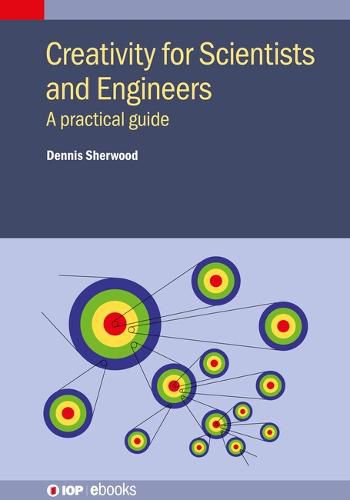Readings Newsletter
Become a Readings Member to make your shopping experience even easier.
Sign in or sign up for free!
You’re not far away from qualifying for FREE standard shipping within Australia
You’ve qualified for FREE standard shipping within Australia
The cart is loading…






This title is printed to order. This book may have been self-published. If so, we cannot guarantee the quality of the content. In the main most books will have gone through the editing process however some may not. We therefore suggest that you be aware of this before ordering this book. If in doubt check either the author or publisher’s details as we are unable to accept any returns unless they are faulty. Please contact us if you have any questions.
All scientists and engineers are creative - you wouldn’t be a scientist or engineer if you weren’t. But can you be even more creative? Do you know how to develop creativity in those who are less confident? And how to build a team culture in which creativity flourishes? If those questions spark interest, then this book is for you. Presenting pragmatic and powerful processes for generating ideas, and for distinguishing good ideas from weak ones, the book explores the fundamental first principles on which creativity is based, as well as the organisational factors that need to be addressed for creativity to happen.
Filled with examples of creativity in science and engineering, and including a contributed chapter in which 13 contemporary scientists and engineers tell their own stories, this book is a practical ‘how to’ guide on how to have good ideas on demand, how to judge between good ideas and bad ones, and how to build a sustainable innovation culture. From gravitational waves to outreach, from safety on trains to how some cows in Kansas triggered an idea for noise reduction, the examples in this book are sure to stimulate individual and organisational creativity.
Key Features:
Provides a practical ‘how to’ guide on how to have good ideas ‘on demand’ Shows how to identify, wisely, the best ideas Presents down-to-earth strategies to increase scientific creativity Includes stimulating case studies contributed by 16 leading scientists and engineers Describes how to build a sustainable organisational culture in which creativity can flourish Written by a world leader in creative consultancy
$9.00 standard shipping within Australia
FREE standard shipping within Australia for orders over $100.00
Express & International shipping calculated at checkout
This title is printed to order. This book may have been self-published. If so, we cannot guarantee the quality of the content. In the main most books will have gone through the editing process however some may not. We therefore suggest that you be aware of this before ordering this book. If in doubt check either the author or publisher’s details as we are unable to accept any returns unless they are faulty. Please contact us if you have any questions.
All scientists and engineers are creative - you wouldn’t be a scientist or engineer if you weren’t. But can you be even more creative? Do you know how to develop creativity in those who are less confident? And how to build a team culture in which creativity flourishes? If those questions spark interest, then this book is for you. Presenting pragmatic and powerful processes for generating ideas, and for distinguishing good ideas from weak ones, the book explores the fundamental first principles on which creativity is based, as well as the organisational factors that need to be addressed for creativity to happen.
Filled with examples of creativity in science and engineering, and including a contributed chapter in which 13 contemporary scientists and engineers tell their own stories, this book is a practical ‘how to’ guide on how to have good ideas on demand, how to judge between good ideas and bad ones, and how to build a sustainable innovation culture. From gravitational waves to outreach, from safety on trains to how some cows in Kansas triggered an idea for noise reduction, the examples in this book are sure to stimulate individual and organisational creativity.
Key Features:
Provides a practical ‘how to’ guide on how to have good ideas ‘on demand’ Shows how to identify, wisely, the best ideas Presents down-to-earth strategies to increase scientific creativity Includes stimulating case studies contributed by 16 leading scientists and engineers Describes how to build a sustainable organisational culture in which creativity can flourish Written by a world leader in creative consultancy